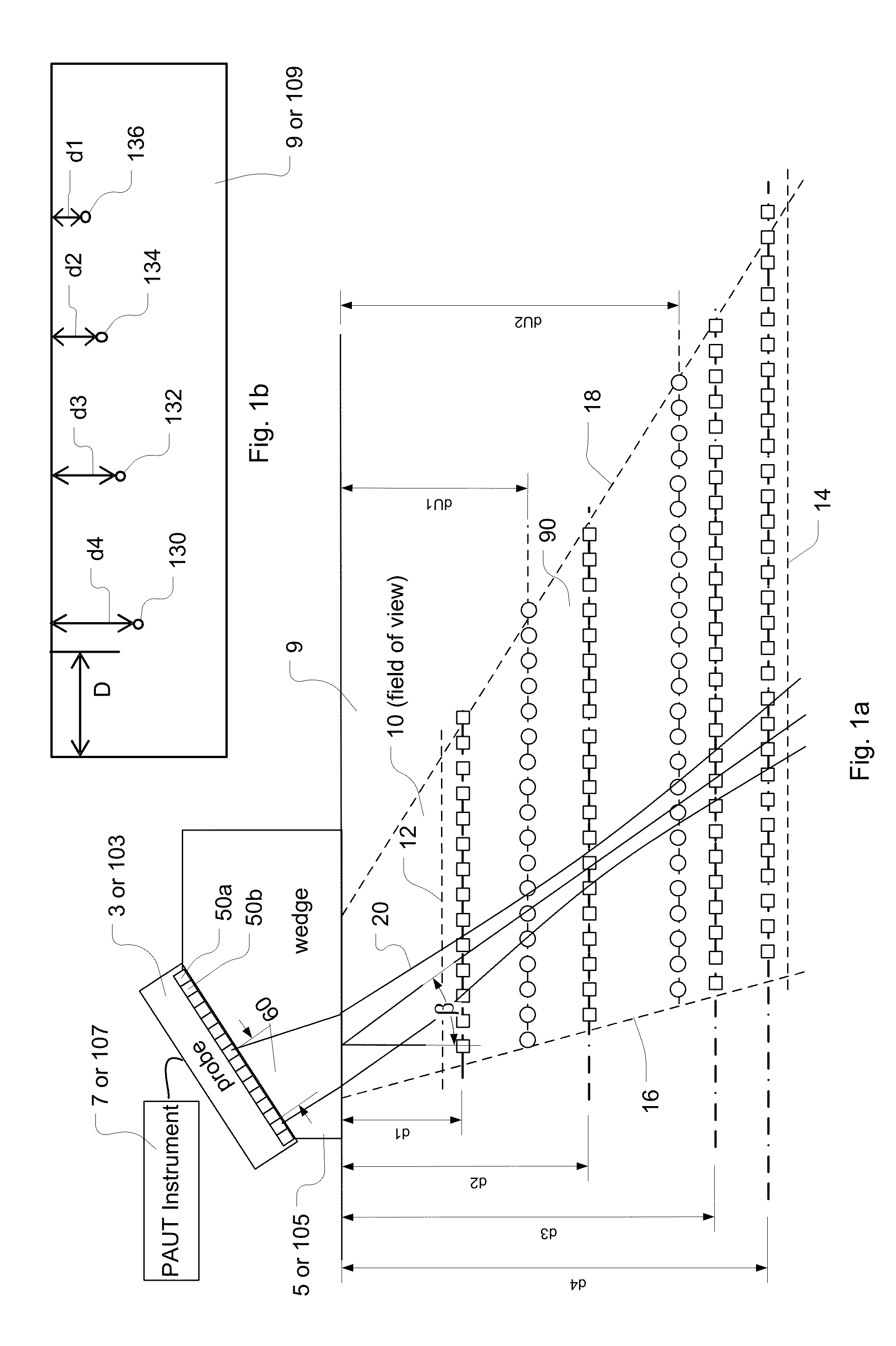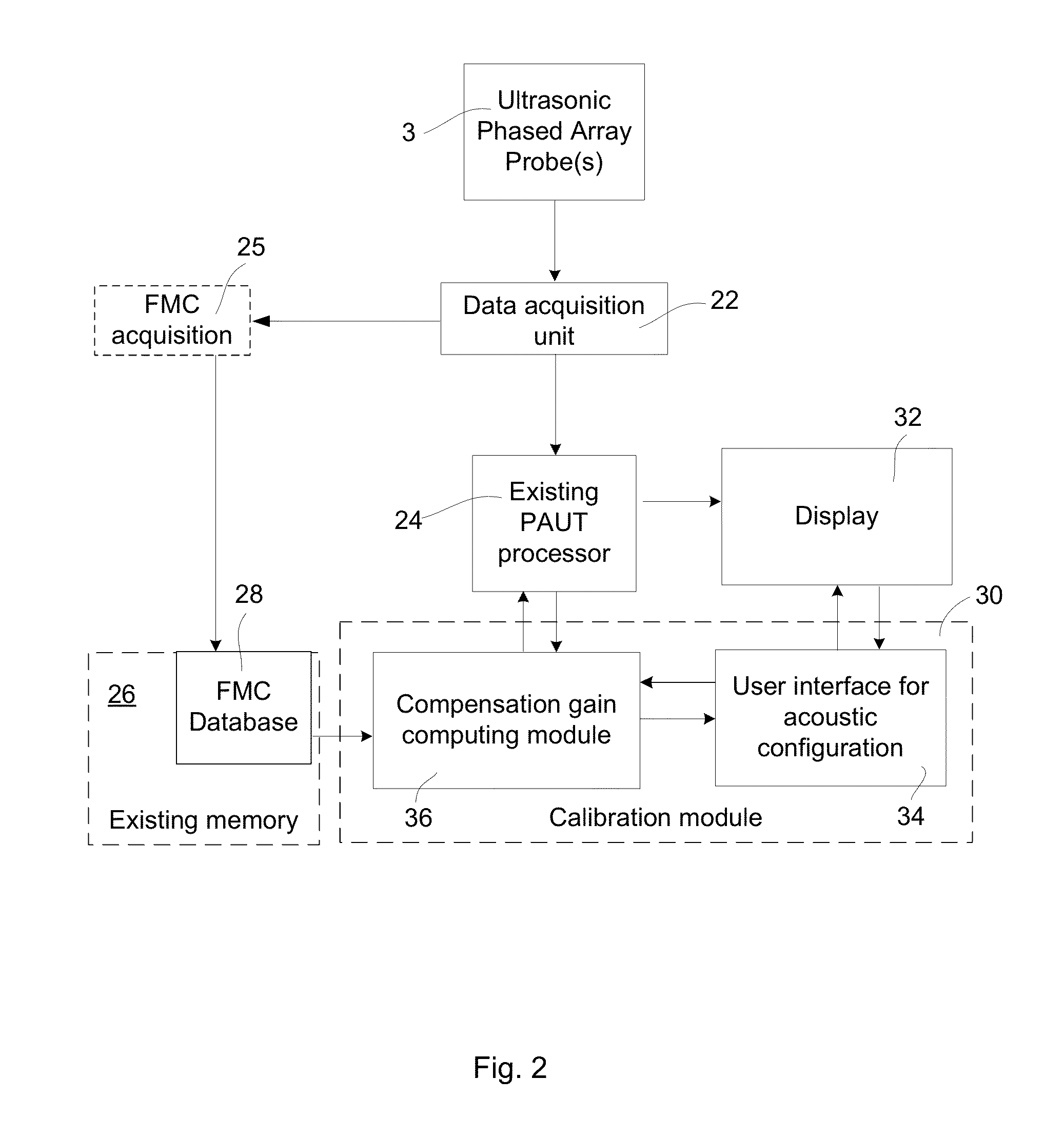Phased array system capable of computing gains for non-measured calibration points
- Summary
- Abstract
- Description
- Claims
- Application Information
AI Technical Summary
Benefits of technology
Problems solved by technology
Method used
Image
Examples
Embodiment Construction
[0023]FIGS. 1a and 1b depict a conceptual representation of the present disclosure showing a PAUT configuration, and including building an off-line database, such as an FMC database. The process of populating the FMC database by obtaining ultrasonic phased array data from a standard calibration block is widely known. It usually involves use of a single axis scanner scanning a series of predetermined known indications at known depths (shown as the square legends in FIG. 1a), and obtains a series of calibration data points acquired under laboratory conditions. Also shown in FIGS. 1a and 1b is the novel aspect of the present disclosure, which is to produce computed calibration points (shown as the circle legends) covering the full field of view 10 of the inspection with those standard calibration points as well as with a limited amount of user data.
[0024]As seen in FIGS. 1a and 1b, calibration points in field of view 10 denoted by square legends are automatically generated from a previ...
PUM
 Login to View More
Login to View More Abstract
Description
Claims
Application Information
 Login to View More
Login to View More - R&D
- Intellectual Property
- Life Sciences
- Materials
- Tech Scout
- Unparalleled Data Quality
- Higher Quality Content
- 60% Fewer Hallucinations
Browse by: Latest US Patents, China's latest patents, Technical Efficacy Thesaurus, Application Domain, Technology Topic, Popular Technical Reports.
© 2025 PatSnap. All rights reserved.Legal|Privacy policy|Modern Slavery Act Transparency Statement|Sitemap|About US| Contact US: help@patsnap.com



